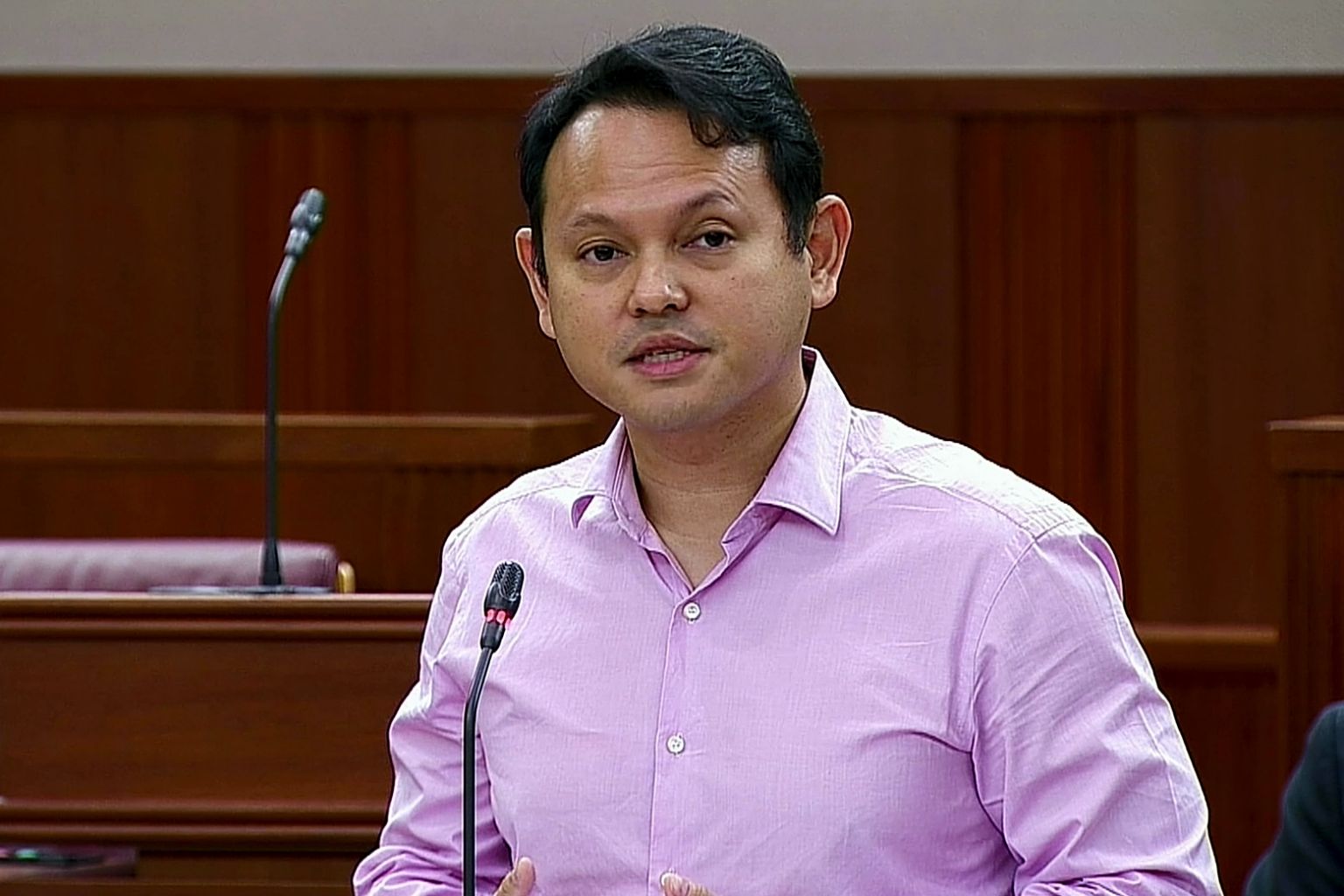Parliament: Singapore way to help low-wage workers, with schemes like Workfare, better than minimum wage, Zaqy says
Sign up now: Get ST's newsletters delivered to your inbox

Minister of State for Manpower Zaqy Mohamad spoke about Singapore's efforts to tackle inequality and ensure social mobility.
PHOTO: GOV.SG
Follow topic:
SINGAPORE - The Singapore approach of providing multiple layers of support for low-wage workers and their families meets the varied needs of individuals better than a minimum or living wage, Minister of State for Manpower Zaqy Mohamad said on Tuesday (March 5).
The cost of a key plank of such support, Workfare, is borne fully by the Government, he noted. And the wages of low-income workers have also grown, he added.
Between 2012 and 2017, real wages of workers in the 20th percentile grew by 24 per cent in total, faster than incomes at the median, which grew by 21 per cent, Mr Zaqy told Parliament.
This is for Singaporeans in full-time work, including employer contributions to the Central Provident Fund (CPF), and before Government transfers.
Low-income Singaporean households also saw household income grow by about 26 per cent in real terms over those years, higher than the 24 per cent for households at the median, said Mr Zaqy.
At the same time, the employment rate for Singaporeans and permanent residents aged 25 to 64 remained high, at about 80 per cent.
Speaking on the issue of efforts to tackle inequality and ensure social mobility, Mr Zaqy said the Government must stay focused on three strategies to achieve such outcomes.
First, maintain a thriving economy with a tight labour market, and create better jobs.
Second, strive for quality growth based on productivity improvements that all Singaporeans can benefit from.
Third, support lower-income workers in general and within specific sectors to ensure they can progress with the rest of the workforce, said Mr Zaqy.
One key support measure is the Workfare Income Supplement (WIS) scheme , which is being enhanced to help more workers.
Finance Minister Heng Swee Keat said in his Budget speech last month that the qualifying income cap for WIS will be raised from the current $2,000 to $2,300 per month from January next year. The maximum annual payouts will also be increased by up to $400.
These enhancements will lead to almost $1 billion being paid out to close to 440,000 WIS recipients next year, including some self-employed people, said Mr Zaqy. The Government will continue to review the scheme regularly, he added.
Older workers will continue to receive higher payouts, as they have less runway to upgrade their skills and save for retirement compared to younger workers, he said, responding to a suggestion by labour MP Zainal Sapari (Pasir Ris-Punggol GRC) to remove the age differentiation.
From 2007 to 2017, 830,000 Singaporeans received $5.5 billion in Workfare payouts. There are also other forms of government support such as Utilities-Save rebates and medical subsidies under the Community Health Assist Scheme (Chas) to help low-income workers meet their living needs.
"Our approach of providing multi-layered support is more responsive to the varied needs of individuals than any single minimum or living wage," said Mr Zaqy.
"Furthermore, this cost of wage supplement is borne fully by the Government, with no cost passed on to employers and consumers. Importantly, we achieved significantly faster real median income growth and ranked high on employment rates compared to other developed countries."
Singapore ranked seventh among the Organisation for Economic Cooperation and Development (OECD) countries for employment rates of people aged 25 to 64 in 2017.
Besides government transfers, there have been efforts to raise skills and productivity of low-wage workers. The Progressive Wage Model (PWM), which sets out career progression and minimum pay for various skill levels, has raised the wages of workers in the security, landscape and cleaning sectors where it is compulsory, said Mr Zaqy.
Between 2012 and 2017, resident full-time security guards, landscape maintenance workers and cleaners had real wage increases of 23 per cent, 36 per cent and 44 per cent respectively, compared to 21 per cent for the median resident worker, not including employer CPF contributions. More than 70,000 workers have benefited from the PWM so far.
The model is being extended as a compulsory requirement to the lift maintenance sector next. The ministry will also explore facilitating the model on a voluntary basis in other sectors. Voluntary PWMs have been set up in the public transport and healthcare sectors.

